Enhanced formaldehyde detoxification by overexpression of glutathione-dependent formaldehyde dehydrogenase from Arabidopsis
- PMID: 12913179
- PMCID: PMC181308
- DOI: 10.1104/pp.103.022277
Enhanced formaldehyde detoxification by overexpression of glutathione-dependent formaldehyde dehydrogenase from Arabidopsis
Abstract
The ADH2 gene codes for the Arabidopsis glutathione-dependent formaldehyde dehydrogenase (FALDH), an enzyme involved in formaldehyde metabolism in eukaryotes. In the present work, we have investigated the potential role of FALDH in detoxification of exogenous formaldehyde. We have generated a yeast (Saccharomyces cerevisiae) mutant strain (sfa1Delta) by in vivo deletion of the SFA1 gene that codes for the endogenous FALDH. Overexpression of Arabidopsis FALDH in this mutant confers high resistance to formaldehyde added exogenously, which demonstrates the functional conservation of the enzyme through evolution and supports its essential role in formaldehyde metabolism. To investigate the role of the enzyme in plants, we have generated Arabidopsis transgenic lines with modified levels of FALDH. Plants overexpressing the enzyme show a 25% increase in their efficiency to take up exogenous formaldehyde, whereas plants with reduced levels of FALDH (due to either a cosuppression phenotype or to the expression of an antisense construct) show a marked slower rate and reduced ability for formaldehyde detoxification as compared with the wild-type Arabidopsis. These results show that the capacity to take up and detoxify high concentrations of formaldehyde is proportionally related to the FALDH activity in the plant, revealing the essential role of this enzyme in formaldehyde detoxification.
Figures
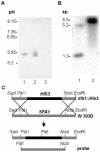
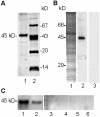
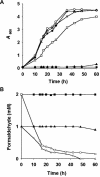
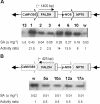
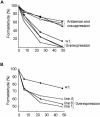
References
-
- Barber RD, Donohue TJ (1998) Function of a glutathione-dependent formaldehyde dehydrogenase in Rhodobacter sphaeroides formaldehyde oxidation and assimilation. Biochemistry 37: 530-537 - PubMed
-
- Bechtold N, Ellis J, Pelletier G (1993) In planta Agrobacterium mediated gene transfer by infiltration of adult Arabidopsis thaliana plants. C R Acad Sci Paris 316: 1194-1199
-
- Berben G, Dumont J, Gilliquet V, Bolle PA, Hilger F (1991) The YDp plasmids: a uniform set of vectors bearing versatile gene deletion cassettes for Saccharomyces cerevisiae. Yeast 7: 475-477 - PubMed
Publication types
MeSH terms
Substances
LinkOut - more resources
Full Text Sources
Other Literature Sources
Molecular Biology Databases

